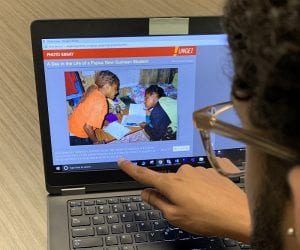Whether it’s Saudi women protesting for the right to drive cars or a Pakistani girl (Malala) speaking out for girls’ education in the face of brutal violence, we regularly see examples of gender inequality in the world’s headlines. In fact, in every country, there is some disparity between the opportunities afforded men and women. Since 2006, this disparity has been calculated by the World Economic Forum. In their just-released Global Gender Gap Report 2013, they provide scores and and rankings for 136 countries. This year, Iceland takes the top spot for the smallest gender gap and Yemen brings up the rear with the widest gap.
In coming up with a score, WEF considered four “pillars” as their indicators of a gender gap — Economic Participation and Opportunity, Educational Attainment, Health and Survival, and Political Empowerment. Not surprisingly, the Nordic countries all finished in the top ten, but there were some bright spots in other areas of the world. Most notably, the Philippines at #5, Nicaragua at #10 and South Africa at #17. The United States ranked 23rd, below Cuba and Burundi. Although the U.S. was among 25 countries which have attained gender equality for Educational Attainment, we scored 60th in Political Empowerment, due in large part to the fact that women only make up 18 percent of Congress.
Why examine the gender gap? Well, as the report explains, there’s a strong correlation between gender equality and national competitiveness. If a country doesn’t utilize the human talent of half its population, it’s missing out. And speaking of population, there’s also a strong correlation between gender equality and fertility rates. When women have more economic and educational opportunities, they tend to have fewer, but healthier, children.
While the WEF Report spotlights the work ahead, there are also measurable successes — 86 percent of countries have narrowed the gender gap in the past eight year, though it’s still widening in the other 14 percent.
You can introduce high school students to the WEF’s “four pillars” in our teaching activity, “A Woman’s Place,” downloadable from this site. The activity examines the gender gap in several different countries.




